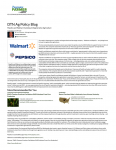Insurance payout boosts profits for Imperial Sugar
In February 2008, a build-up of sugar dust caused an explosion that killed 14 and injured more than 40 at Imperial Sugar’s Port Wentworth, Georgia plant. The facility is responsible for about 60 percent of the company’s refining capacity and, as it waited for rebuilding efforts to be completed, Imperial Sugar has struggled to escape the explosion’s financial toll.
However, as a result of pre-tax gains of $278.5m from the insurance settlement, the company reported an income of $178.1m, or $14.84 per share for the first quarter of fiscal 2010, ended December 31. Without this payout and net gains from sugar price hedging contracts, the company would have posted a loss of $6.5m, or $0.55 per share.
The company’s president and CEO John Sheptor said: "The finalization of our property and business interruption insurance claim is a major milestone in our recovery from the Port Wentworth tragedy…We continue to make important progress in the Port Wentworth reconstruction, with the start up of the conditioning silos in January. We continue efforts to improve the refinery production rate, with a target to return to normal operations within the quarter. Packaging plant start up activities are focused on the new brown sugar and powdered sugar lines in anticipation of supplying customer Easter holiday requirements."
Sugar winning market share
In a conference call with investors, Sheptor said that an industry-wide move away from high fructose corn syrup, particularly in the beverage industry, is cause for optimism for the future of sugar in general.
He said: “Large brands such as Gatorade were transition to sugar in this past quarter while large market tests for others such as Pepsi and Mountain Dew have been initiated. Numerous new food products are appearing on retail shelves highlighting the advantages of natural sugar. The USDA reported for this past year a reduction of 400,000 tons of high fructose corn syrup as a result. This trend is picking up momentum and consumers are acting positively to the availability of natural sugar alternatives.”
Fears about high fructose corn syrup were raised in 2004, when an article was published in the American Journal of Clinical Nutrition hypothesizing that the sweetener could be linked to rising rates of obesity. One of the article’s authors, Dr Barry Popkin, has since said that he was wrong to pinpoint high fructose corn syrup as obesity’s major cause, but consumer concern has continued nonetheless.

















